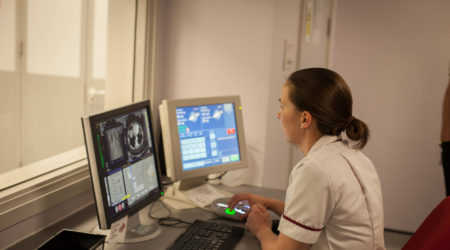Read all the NICE guidelines for pancreatic cancer
- NICE guidelines for diagnosing and managing pancreatic cancer
- NICE guideline 1: Diagnosing pancreatic cancer
- NICE guideline 2: Specialist pancreatic multidisciplinary teams
- NICE guideline 3: Working out how far pancreatic cancer has spread
- NICE guideline 4: Emotional (psychological) support for pancreatic cancer
- NICE guideline 5: Managing pain and pancreatic cancer
- NICE guideline 6: Managing diet and pancreatic cancer
- NICE guideline 7: Relieving a bile duct or duodenum blocked by pancreatic cancer
- NICE guideline 8: Managing resectable (operable) and borderline resectable pancreatic cancer
- NICE guideline 9: Managing pancreatic cancer that can’t be removed with surgery
3.1 If you have recently been diagnosed with pancreatic cancer but haven’t already had a CT scan, you should be offered one. The scan should include the chest, abdomen (tummy) and pelvis (area below the belly button).
3.2 If you have localised pancreatic cancer and will be having surgery, chemotherapy or radiotherapy, you should be offered a FDG-PET/CT scan.
The FDG-PET/CT scan helps to confirm whether it is possible to remove the cancer.
3.3 If the doctors need more information to decide on your care, they should consider one or more of the following:
- an MRI scan to check if the cancer has spread to the liver
- an endoscopic ultrasound (EUS) to help work out the stage of the cancer
- a laparoscopy if surgery is a possibility, but there is a chance the cancer may have spread.
Published: August 2018
Review date: August 2023




